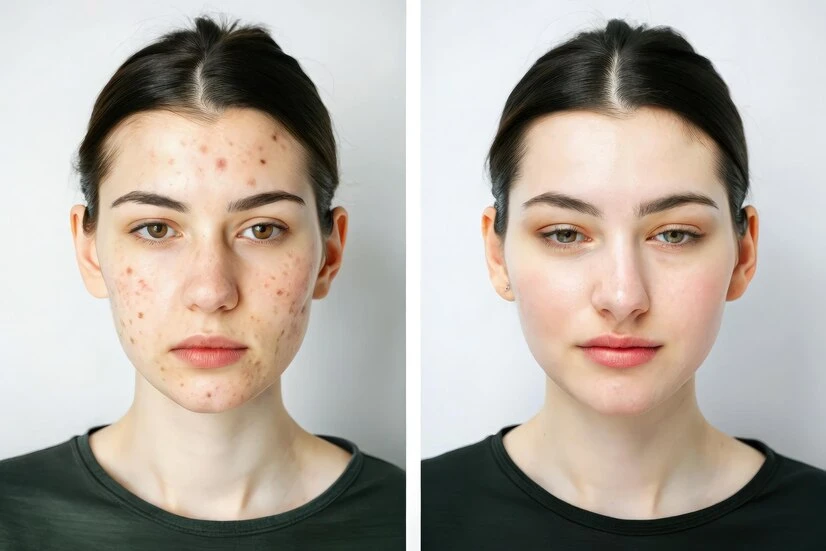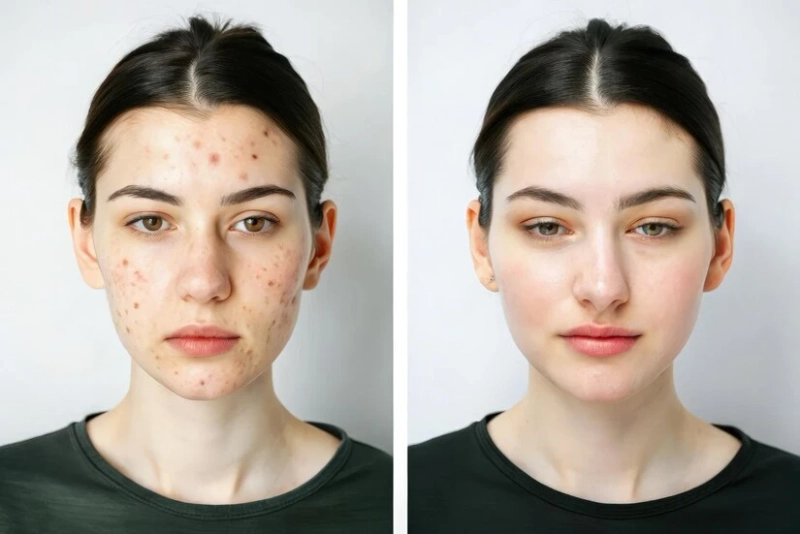Retinol, a vitamin A derivative, has become a cornerstone in skincare routines for its proven ability to revitalize skin texture, tone, and elasticity. Whether you’re battling acne, hyperpigmentation, or signs of aging, understanding the retinol cream before and after journey can help set realistic expectations and maximize results. Here’s an in-depth look at what to anticipate at each stage of retinol use, supported by insights from dermatologists and real-world experiences.

The Science Behind Retinol’s Magic
Retinol accelerates cellular turnover, shedding dull, damaged skin layers to reveal a brighter complexion. It also stimulates collagen production, improving elasticity and reducing the appearance of fine lines. Unlike immediate fixes, retinol works cumulatively, making patience essential. Initial results may be subtle, but long-term use can yield dramatic transformations, as seen in clinical studies and user testimonials.
The Retinol Timeline:
Weeks 1-3: The Adjustment Phase
During the first few weeks, your skin may undergo a “purging” period. Breakouts or mild irritation are common as retinol unclogs pores and pushes impurities to the surface. Some users report temporary redness or flaking, particularly around sensitive areas like the nose and chin.
Pro Tip: Start with a low-concentration formula (0.25%-0.5%) and apply it 2-3 nights weekly to build tolerance. Pair with a hydrating moisturizer to counteract dryness.
Months 1-3: Early Glimmers of Progress
By the second month, texture improvements become noticeable. Skin appears smoother, with reduced roughness and minimized pores. Fine lines, particularly around the eyes and forehead, may begin to soften. Users often describe a newfound luminosity as dead skin cells shed, revealing a radiant underlayer.
Case Study: A Reddit user shared that after six weeks of consistent use, their chin area transformed from flaky and acne-prone to “dewy and luminous,” with a texture matching their naturally smooth forehead.
Months 3-6: The Turning Point
This phase marks significant visible changes. Deeper wrinkles, sunspots, and hyperpigmentation fade as collagen remodeling takes effect. A Protocol Skincare study found that users experienced a 40-60% reduction in hyperpigmentation and improved skin clarity within this window.
Real Results: One individual noted their “11 lines” (vertical forehead wrinkles) softened dramatically after four months, eliminating the need for Botox considerations.
6+ Months: Peak Transformation
Long-term retinol use (6-12 months) delivers the most striking before and after differences. Skin appears firmer, with a unified tone and diminished scarring. Collagen levels stabilize, maintaining a youthful bounce, while persistent concerns like cystic acne or deep wrinkles see marked improvement.
Expert Insight: Dermatologists recommend taking baseline photos before starting retinol to track progress. Reassess at 90-day intervals to appreciate gradual changes that might otherwise go unnoticed.
Maximizing Retinol’s Efficacy
- Consistency is Key: Apply retinol nightly (or as tolerated) after cleansing.
- Layer Smartly: Follow with a moisturizer to lock in hydration and reduce irritation.
- Sun Protection: Daily SPF 30+ is non-negotiable—retinol increases photosensitivity.
- Avoid Harsh Actives: Skip exfoliants (AHAs/BHAs) on retinol nights to prevent barrier compromise.
Real-Life Retinol Journeys
● Acne to Ageless: A user battling post-inflammatory marks saw breakouts subside and scars fade within six months, crediting retinol’s dual action on acne and collagen.
● Sun Damage Reversal: After eight months, another individual reported a 70% reduction in UV spots and visibly smaller pores, attributing it to retinol paired with vitamin C.
● Texture Triumph: One reviewer described their skin as “glass-like” after a year, with enlarged pores and rough patches eradicated.
Common Pitfalls and Solutions
● Overuse: Applying too much too soon can cause redness. Stick to a pea-sized amount.
● Quitting Early: Purging or peeling often resolves within weeks—persist through the adjustment phase.
● Product Pairings: Combine retinol with niacinamide or ceramides to bolster the skin barrier.
Beyond Creams: Advanced Retinoids
For faster results, consider retinaldehyde (a stronger retinol variant) or prescription tretinoin. These options accelerate cell turnover but require medical supervision to manage potential side effects.
Final Takeaway
Retinol cream before and after results underscore its status as a skincare powerhouse. While the journey demands patience, the payoff a smoother, clearer, and more resilient complexion is worth the commitment. By tailoring usage to your skin’s needs and tracking progress methodically, you can unlock retinol’s full potential and embrace a radiant, age-defying glow.


